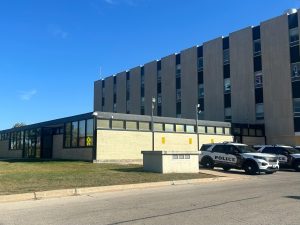Safety phone system lacks key support
September 8, 1989
The implementation of the security phone system proposed in March of 1988 and delayed because of red tape has still not won support from a key group.
Morenike Cheatom, Student Association welfare adivser, said the process is a “slow, bureacratic thing.”
The safety phones will be supplied by the Motorola Corp. and placed throughout campus. Motorola is one of two companies that bid for the NIU account. “All Motorola needs is the money,” but Cheatom said she did not know the cost of the project.
However, Beverly Beetham, the Sexual Assault Task Force chairperson, is less optomistic about the phones and said her committee has “mixed reactions.”
“Most of the sexual assaults we see are date rapes,” Beetham said. “They’re not occuring on the street. They’re occuring in dorm rooms, apartments and rooms—(places) where the phones will not be.”
I don’t know about its effictiveness,” she said. “I think it’s offering false security.”
The security phone system was originally discussed in March of 1988 by SA Sen. Lisa Gunn. She said at the time, “I think it would pay for itself if it saves one person from a rape.”
A system test was scheduled for the summer of 1988, but did not occur because of a lack of funding. “They (Motorola) won’t install even a test phone without any money,” Cheatom said.
The phone system works by lifting the receiver, which sounds an alarm at the University Police station. Although Cheatom said she hopes the phone system is used properly, “There’s no way to stop people from acting silly,” she said.
Cheatom proposes a “test” day for students to experiment with the phones and get the urge to commit false alarms out of their systems. “We’ll let students play around with them,” she said.
UP Lt. Ken Kaiser said false alarms should not be a problem. The phone system would be designed in the hopes of catching people who perpetrate false alarms. “Every system has its flaws and bugs,” he said. “Hopefully, we can teach people proper use of the phones. If not, they’ll be caught.”
Cheatom said the phones will be located on streetlights and will be powered from the streetlight batteries.
Kaiser stresses placement of the phones in “well-traveled” areas and encourages pedestrians to “walk in well-lit areas.”
Judicial Office Director Larry Bolles said the emergency phone “is better than what we have. I was supportive when they first proposed it, and I’m supportive now.”
Bolles said he hopes the phone system can be used as a preventive measure against crime. The phones can act as a “psychological” tool to help deter crime and help make students feel safe while walking, he said.






